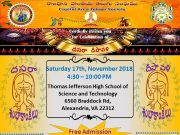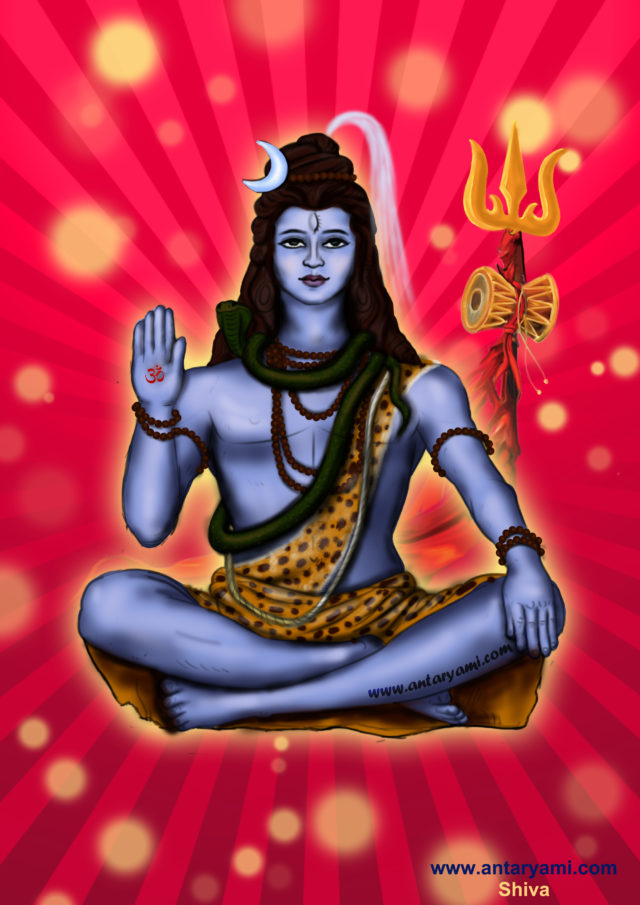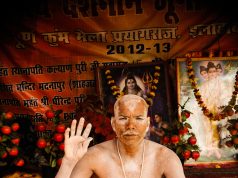Given the tender nature of Hindus, it is somewhat surprising that one of the most popular gods is known as “the destroyer.” But Lord Shiva’s appetite for destruction comes in the form of destroying one’s ego.
Lord Shiva proved himself to be the most powerful god in the Hindu pantheon. We find this concept in the story of the Shiva Lingam which portray the god as having the ability to transcend time and space and essentially live forever.
In one ancient myth, the three gods of the Trimurti were arguing over who is the most powerful. To prove he was the highest authority, Shiva transforms into a shaft of bright light that embraces the Universe.
The god challenges Vishnu and Brahma to find the end of the lingham. Neither God succeeded, but Brahma, wanting to be considered the most Supreme God, lied and said he had found the end.
Angered by Brahma’s deceit, Shiva burns his fifth head, the one that had formed on the top of his head. The crown of the head is where we connect with our true self, the fifth element, sometimes described as our spirit. Our soul.
In Hindu myth, Shiva is an ascetic and is often found alone in his cave, meditating. In these moments, Hindu art projects the concept of tranquillity and a mind that is at peace.
It seems absurd that such a relaxed god can be angered so easily and associated destruction. But Shiva is consciousness and our higher self – the “super-ego” – is maddened by the ego, the conscious mind.
The conscious mind often succumbs to habits that are created by desire. Desire comes from our emotions and distracts our thoughts. Thoughts and emotions are represented by the androgynous form of Brahma and his female aspect, Saraswati.
This is why we often see Shiva arguing with Brahma and getting angry with him. Shiva’s ability to destroy represents the destruction of our ego. We sometimes need to lose the ego.
The power of Shiva
Lord Shiva may be unpredictable, but whatever he dissolves is recreated with the help of his consort, Parvati, goddess of love and fertility. Together, Shiva and Parvati represent ability to destroy ego and develop a higher state of consciousness.
Hindus evoke the essence of Shiva when they want to change something about their actions. Our actions are driven by thoughts and emotions, and by overcoming habitual acts, you can nurture in new patterns of behaviour.
Thus the principle lesson of Shiva is that by connecting with our higher conscious and dissolving character traits, belief systems and actions that no longer serve us, we experience calmer states of mind.
The concept of personal transformation is identified with the idea of death and rebirth – resurrection. This idea is emphasised in the story of how Shiva’s son, Ganesh came to acquire an elephants head.
Parvati had a guard whom she instructed to refuse access to everyone that asked to enter into her private chambers. When he let Lord Shiva enter she dismisses the guard.
Needing a guard she can trust with all her heart and soul, she gives birth to a son. Ganesh.
Reliable and faithful, Ganesh refuses Shiva entry into his wife’s chambers. This angers the god and he kills Ganesh by setting his head on fire with his third eye.
Upset by the actions of her husband, Parvati orders Shiva to resurrect her son. Shiva obliged, but can only find an elephant’s head.
Ganesh is known as the remover of obstacles, but it often goes unnoticed that he also places obstacles. As an extension of the aspects personified in Parvati and Shiva, Ganesh represents those times when things either go smoothly, or when we have a bad day.
The lessons of Shiva and Parvati in Hindu Myth
The lessons we learn from the stories of Shiva in Hindu myth help us to understand why Shiva is the most powerful among the Supreme Gods.
One part of Shiva symbolises our need to give something up. We see this concept demonstrated in the story of Shiva’s marriage to Parvati – a reincarnation of the Lord’s first wife, Shakti.
When Shakti killed herself in the fire of Yagna Shiva retires to a cave to be alone. With Shakti gone, there is nothing in the world he wants.
Shiva becomes a recluse and does not even have the energy to help the gods save the Universe when they are attacked by demons. An oracle informs the worried gods that only a son of Shiva could defeat the demons.
But for that, Shiva needed a wife. So Shakti, who represents energy, reincarnates herself as Parvati. Depicted with dark skin, Parvati represents the dark side of our nature, the negative energy and Shiva rejects her.
Determined to win over Shiva’s love, Parvati commits to equalling the powers of Shiva and dedicated herself to meditating and requiring knowledge. When she becomes as powerful as Shiva, she turns into a golden beauty and the God recognises her as his equal.
Together, Shiva and Shakti represent universal energy. In ancient symbolism, this concept is represented by Ida and Pingala.
What do Shiva’s symbols mean?
Shiva is typically pictured lying on a serpent, which represents consciousness, both the sub-conscious mind and the higher-self. The serpent is Shiva’s bed, indicating the Lord is at peace and is master over his sub-conscious.
The other main characteristics of Shiva is the third eye in the middle of his forehead and the trident, both of which he uses to destroy anything that angers him.
The ajna is also centred on the forehead. Hindus also call this point the third eye chakra. This is our mind’s eye, the ability to visualise in our minds. During meditation it is possible to destroy aspects of yourself that no longer serve you.
Modern science is beginning to discover the “phenomena” of neuroplasticity, the ability to change the course of our neurons and change our patterns of thinking.
Our mind is more powerful than we believe. Although it may be difficult at first, it is possible for us to dissolves character trait, attitudes, bad habits and addictions we do not need.
The necklace of skulls that hangs around Shiva’s neck symbolises this philosophy, once again projecting the idea of death and rebirth that we find throughout ancient mythology all over the world.


























